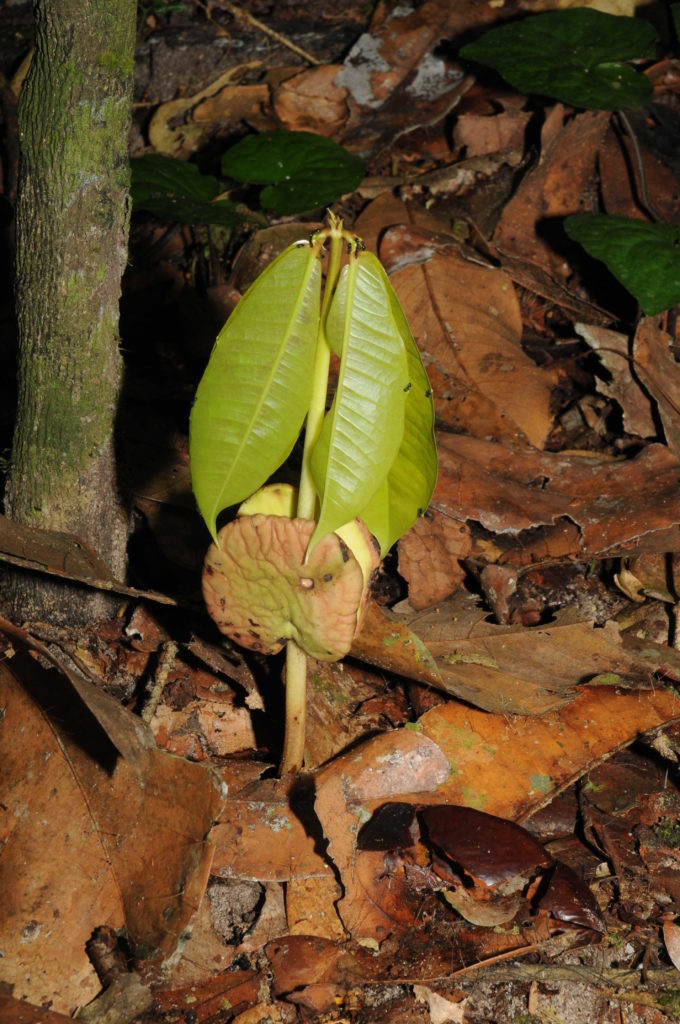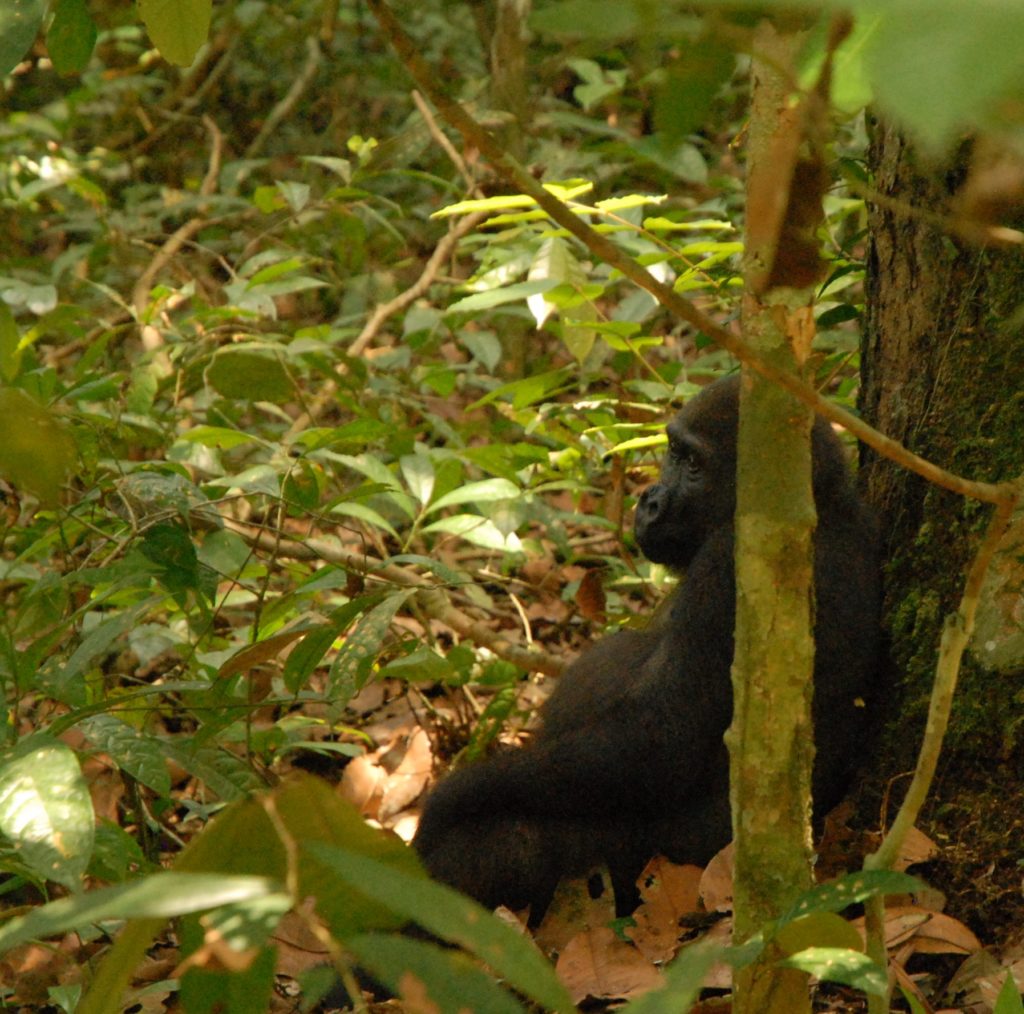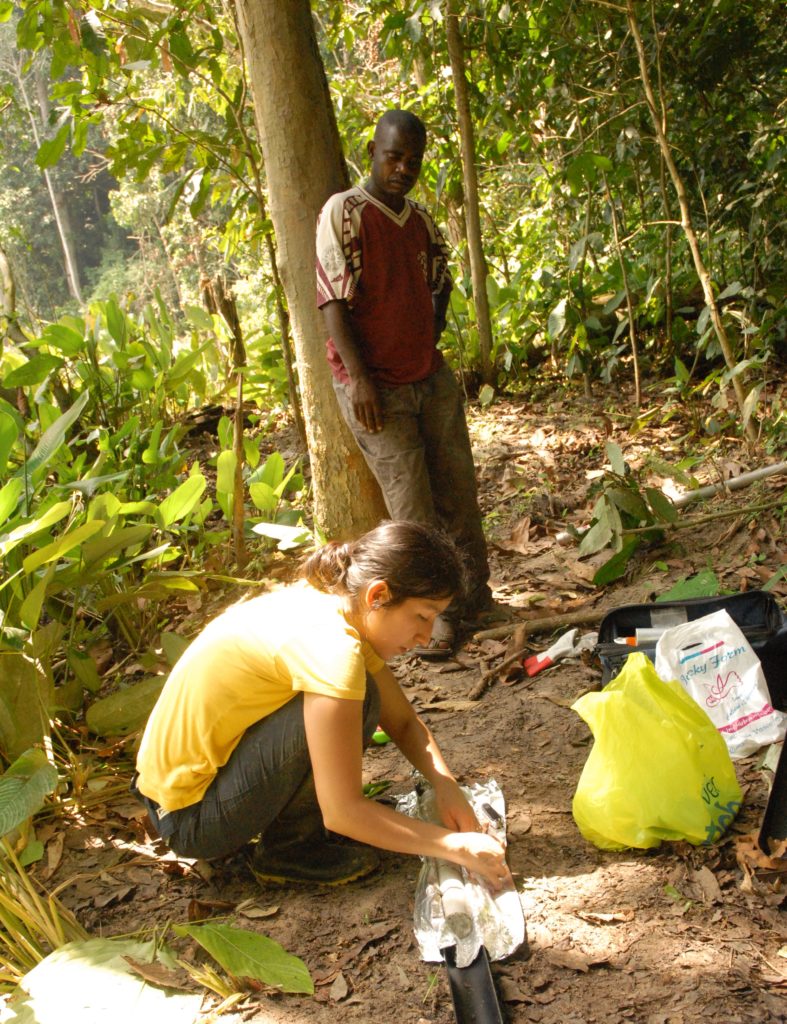In the forests of central Africa there is an amazing species of tree. It is called Gilbertiodendron dewevrei. Fortunately, the people who live there have shorter names for it, like bemba, malapa or mbau. One of the first thing visitors to the forest notice about this tree is that – right next to some of the most diverse forest in Africa, where each tree is a different species to its neighbour – bemba forms almost pure stands.
Yes, that’s right, this tree overturns every stereotype you have heard about plant diversity in the tropics. It forms stands in which up to 80% of all stems thicker than your finger belong to the one species. All over the ground, there is nothing but seedlings and dried leaflets of bemba as far as the eye can see.

And it’s a stunning forest – it is beautiful. The light is filtered through hundreds of green leaflets, with the occasional ray of sunlight making it straight through the deep crowns to the ground 35 m below, like an arrow shaft from heaven. The bemba forest is used by gorillas who search for truffles in the soil, forest pigs snuffle through it, chimpanzees make nests in the branches to sleep at night, and elephants pass through it occasionally digging up soil from an old termite mound for minerals. The soundscape of the forest in central Africa is very special: the bloodcurdlingly human cry of a Tree hyrax; women and children singing to call spirits out of the forest; drumming in the wee small hours at a funeral that goes right to the depth of your soul. One of the most beautiful sounds I have heard in my life is the melody of the Western oriole, just after dawn, in a bemba forest.

This year two papers came out exploring some other amazing things about bemba forest. The first led by my colleague Carolina Tovar in the Journal of Vegetation Science provides evidence that a single patch of bemba forest in the Noubale Ndoki National Park in the Republic of Congo has been dominated by Gilbertiodendron dewevrei for at least 2700 years. This little patch is only a few hundred metres wide but through all those centuries it has been the one forest type: bemba.

For the last 60 years scientists have been trying to work out how Gilbertiodendron dewevrei forms this special kind of forest. Jeff Hall led a piece of collaborative research which has moved forward our understanding of this incredible plant. In this paper in the Journal of Ecology we show some of the ways that bemba forest is maintained by the trees using a combination of traits to keep ahead of the competitors by making better use of scarce resources such as nutrients and light. One of these is the ability to form associations with fungi that allows bemba to outcompete other trees on the poorest soils in the forest. Another is the ability to grow well in very deep shade and in full sunlight.
There are many more interesting aspects to this species and over the next decade I believe we are going to learn a lot more about bemba forest that will change how scientists think about the diversity of tropical forests. It’s a tree with some amazing stories to tell.
You can read Jeff’s blog here.
References
- Tovar, C. Harris, D.J., Breman, E. &T. Brncic, Willis, K.J. (2019) Tropical monodominant forest resilience to climate change in Central Africa: A Gilbertiodendron dewevrei forest pollen record over the past 2,700 years. Journal of Vegetation Science.
- Hall, J.S., Harris, D.J., Saltonstall, K., de Paul Medjibe, V., Ashton, M.S. and Turner, B.L. (2019) Resource acquisition strategies facilitate Gilbertiodendron dewevrei monodominance in African lowland forests. Journal of Ecology.
